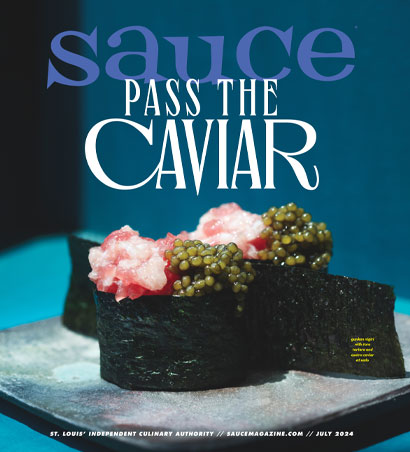Why we're drinking island wines this fall
Wines from mainland Europe and the U.S. get a lot of love, but offshore vinos from several regions are making waves with wine lovers, and they’re slowly gaining ground locally, both on menus and on retail shelves.
Alisha Blackwell-Calvert, advanced sommelier at Cinder House, said the category of island wines is broad and varied and, pricewise, they run the gamut from bargain to premium. “Island wines [can be] really affordable or not at all, depending on the island,” said Blackwell-Calvert, who had some island wines on her menu at the late Reeds American Table.
She said wines from Santorini, a Greek island, are fairly easy to find in St. Louis, while other island wines, like those from Portugal’s Azores islands (she’s particularly fond of wines from Azores Wine Co.), are hard to come by.
“The larger markets are already drinking [Azores wines],” she said. “It’s being brought in, but we’re lagging a bit with them. It’s a fun thing to look out for, if people are traveling.”
Corsican wines are also a bit hard to find locally, but Blackwell-Calvert recommends a Corsican wine-based quinquina aperitif called Mattei Cap Corse, available in rouge and blanc versions, as a great spritz base or a cocktail component. Both versions are available at The Wine & Cheese Place.
Simon Lehrer, buyer for Parker’s Table, said Sicilian wines have been gaining popularity in recent years, are typically reasonably priced and especially good for summertime quaffing. “The reds are light, the whites are crisp, they’re just good warm weather wines,” he said, noting their bright, mineral-driven profile.
Lehrer said he has some Sardinian, Corsican and assorted Greek island wines on the shelves currently, and he does periodically get in wines from the Azores and the Canary Islands; however, these are hit or miss as far as availability, so it pays to browse often.
Blackwell-Calvert said one thing shoppers should note is that some island wine grape varietals can be confusing, so a little research can help figure out what the juice in the bottle might taste like.
“A lot of the islands have their own indigenous grapes,” she said. The Azores, for example, has Arinto de Azores, which has a similar clean minerality found in unoaked chardonnay from the Chablis region of France, while Corsica has an indigenous grape called nielluccio, which is genetically sangiovese, a component in many Italian wines like Chianti.
Most Recent
Drink this savory martini at The Lucky Accomplice in St. Louis
The Lucky Accomplice’s bar manager Corey Moszer is thinking outside the box …






